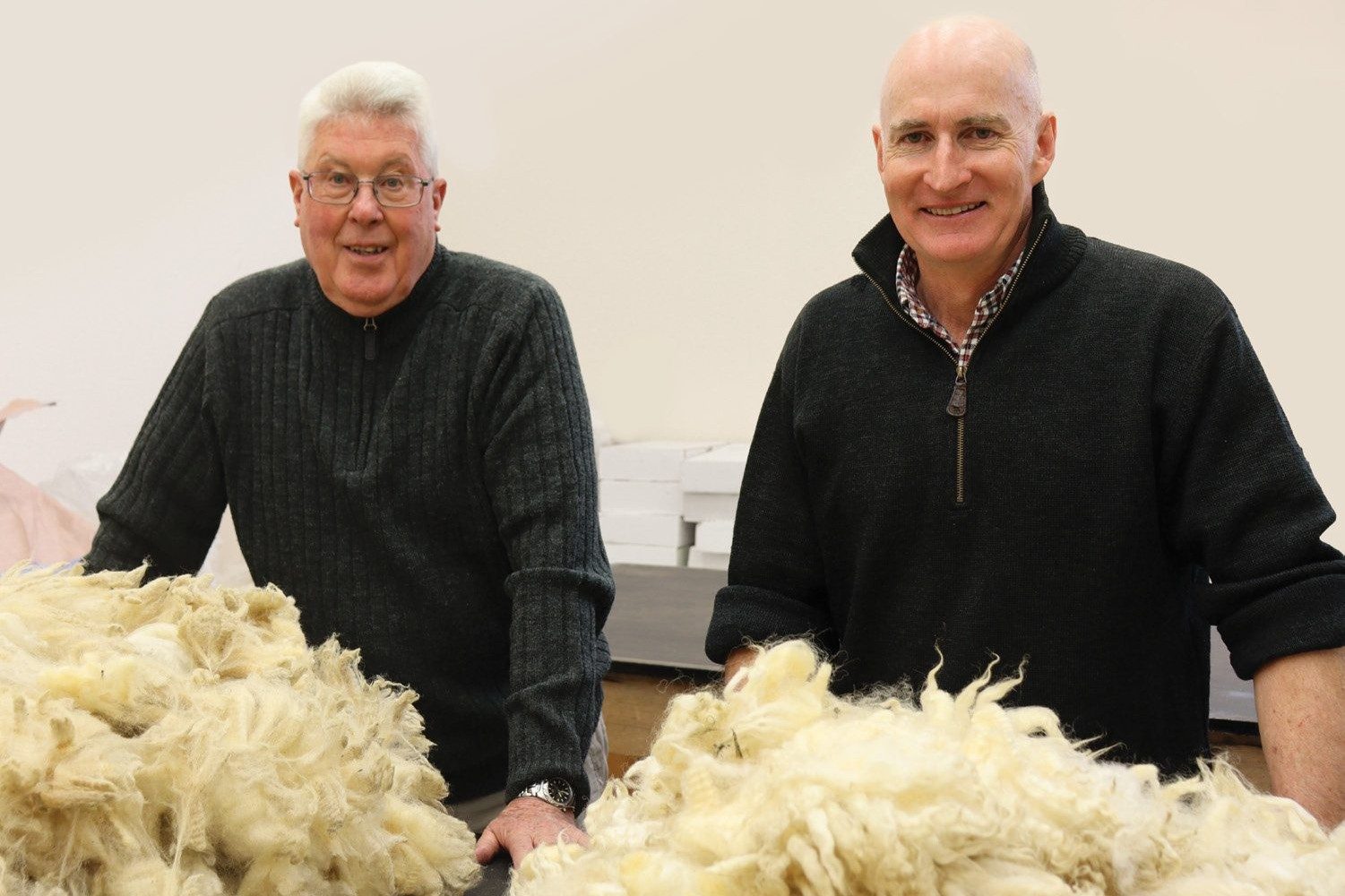Wool diploma draws numbers
By Richard Gavigan

I’m finding it difficult not to get just a little bit excited about what’s happening with wool at the moment.
I know – prices are still a long, long way from where they need to be, but they are up from the level best described as abysmal operating this time last year.
When we sold wool in 2020 after second shearing the ewes in July, we received 145c/kg greasy in the shed. About 12 months later our price for the same wool type was 230c/kg greasy, up a whopping 59%.
We’re still not breaking-even on the cost of harvesting, but if you view winter shearing as a useful animal health treatment then only having to pay 20c/head this year compared with $1.90/head last year makes you feel a lot better.
Prices aside, there is a good feeling in the wool industry at the moment. Almost every day I see something written about the positive attributes of wool or some exciting new initiative.
The facts are undeniable: wool is natural; it is biodegradable; it is renewable; it is flame, odour and stain resistant and it’s a lot of other good things as well. If a new product had even two of these qualities it would probably have a strong business case.
Also exciting is the number of people choosing to study wool at a tertiary level again.
For the last 18 months I’ve been helping long-time wool tutor Laurie Boniface teach the New Zealand certificate of wool technology and classing offered by the Telford faculty of the Southern Institute of Technology.
The only course of its type in New Zealand, the certificate is a refined version of what used to be taught at Massey and Lincoln Universities and is a prerequisite to becoming a registered wool classer. It is NZQA accredited, is endorsed by the NZ Wool Classers Association and can be studied part-time online with hands-on block courses run in both the North and South Islands.
Student numbers have more than doubled during the past two years to more than 60 students enrolled. There’s a pressing need to put even more people through the course as an increase in activity and an ageing staff in many wool businesses calls for more graduates with some wool in their CV.
Boniface is Telford’s senior tutor in wool technology. Based at Massey University, he has been teaching wool technology for more than 35 years, starting at Massey in 1985 after previously working as a wool buyer.
Now something of an industry icon, Boniface has been the caretaker of a course that has survived wool’s past 30 turbulent years. He has taught several thousand students, including agricultural science and veterinary science undergraduates.
“Our students have always come from a lot of different sectors of the wool industry,” Boniface says.
“Farmers, wool handlers, and people working for wool brokers, private merchants, scours, spinners and even meatworks have all done the course.
“We used to get a lot of groups from the Chinese Textile Resource Corporation’s huge processing mills coming to New Zealand and spending time with us.
“I really enjoyed working with these groups and it led to me making a very memorable five-week lecture tour of China in 1992. China was only just starting to get going back then – there were very few cars on the road and just one McDonalds in Beijing.”
Boniface has come a long way since starting work fresh out of school with a Palmerston North wool buyer in December 1964. His first job was to fill and tramp the top box of an early electric wool press and act as smoko-boy at the store. He recalls that after completing his wool studies at Massey University he went to see his employer in his office and politely told him that he was now fully qualified, had been offered a wool classer’s position at a wool broker’s store in Napier and deserved a pay rise.
“He asked me how much the other outfit was going to pay me and, like the young fool that I was, I didn’t add to it but told him the exact amount. My boss hesitated momentarily, then said to me that yes, he would pay me the new rate.
“Just managing to contain my excitement I accepted his offer, thanked him and turned to leave. As I was heading out the office door, he added that he would also be docking me a day’s pay for going in to see the opposition!”
Boniface is confident that wool has an excellent future. He has just re-carpeted his entire home with high-quality 100% wool carpet and reckons he only paid a couple of hundred dollars more than he would have for a plastic alternative. He is still backing wool as a career-choice, just as he did in 1964.
“Like a lot of other industries we’re starting to experience a real shortage of trained staff and there are good employment opportunities out there,” Boniface says.
“None of us are getting any younger, and the previous years of poor returns have made wool look unattractive as a career.”
- Richard Gavigan is a farmer and wool technology teacher.




